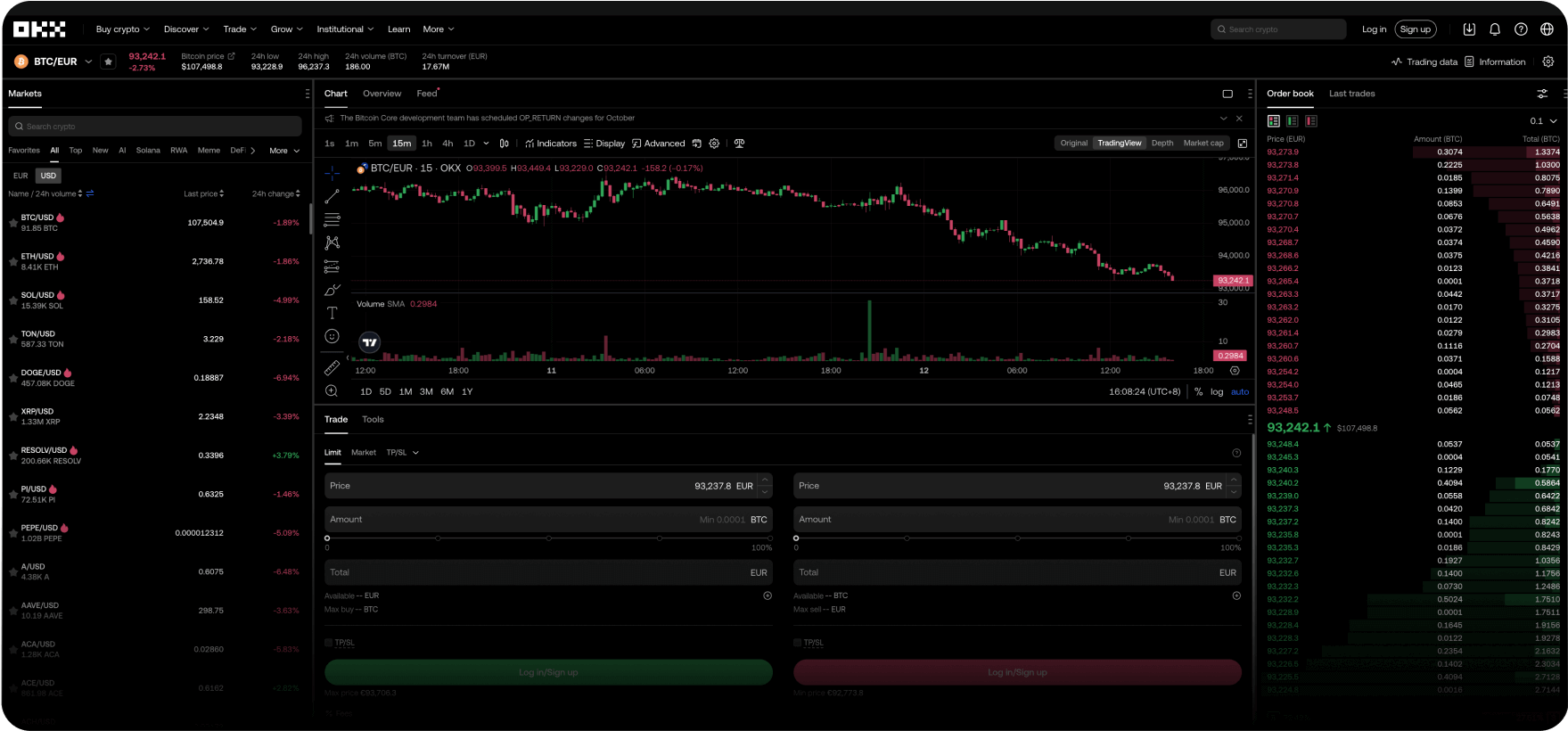Twoje globalne konto w dolarach cyfrowych
Ciesz się najniższymi opłatami, szybkimi transakcjami, wydajnymi API i nie tylko.

Będziemy z Tobą na każdym etapie
Od dokonania pierwszej transakcji kryptowalutowej do stania się doświadczonym traderem — przeprowadzimy Cię przez ten proces. Nie ma nieistotnych pytań. Żadnych nieprzespanych nocy. Zaufaj swoim kryptowalutom.
Trener Pep Guardiola
Wyjaśnia „zwariowaną formację piłkarską”
Napisz system na nowo
Witamy w Web3
Snowboardzista Scotty James
Sprowadza całą rodzinę
Pytania? Mamy odpowiedzi.
Jakie produkty oferuje OKX?
Jak kupić Bitcoin i inne kryptowaluty na OKX?
Gdzie ma siedzibę OKX?
Czy mieszkańcy Unii Europejskiej mogą korzystać z OKX?



